From the May 2015 issue of Apollo: preview and subscribe here
European architects of the fin de siècle often looked back to national traditions of building as they sought to forge novel styles. But the Hungarian Ödön Lechner looked further afield, finding inspiration in the Indo-Saracenic buildings of British India
The Museum of Applied Arts in Budapest was completed in 1896. It is claimed to be the first museum building in Europe designed in a non-historical style; it is certainly unprecedented, extraordinary, a riot of colour. The tall pitched roofs and dome are covered in bright green and golden yellow glazed tiles; the walls are partly faced in a pattern of glazed bricks and tiles reminiscent of Oriental carpets. The shapes of windows and railings are curvilinear and eccentric. The porch is lined with red glazed bricks and has a ceiling patterned with flower motifs like Moghul inlaid marble work, while the stair balustrades are curvaceous, almost zoomorphic forms in bright yellow majolica. Inside, however, all is white, although there is colour in the central stained-glass skylight. Surrounding a principal space, covered by an iron and glass roof, are arcades with cusped arches, while columns and openings have, again, an Indian character. This interior is reminiscent of a colonial-era British building in, perhaps, Madras.
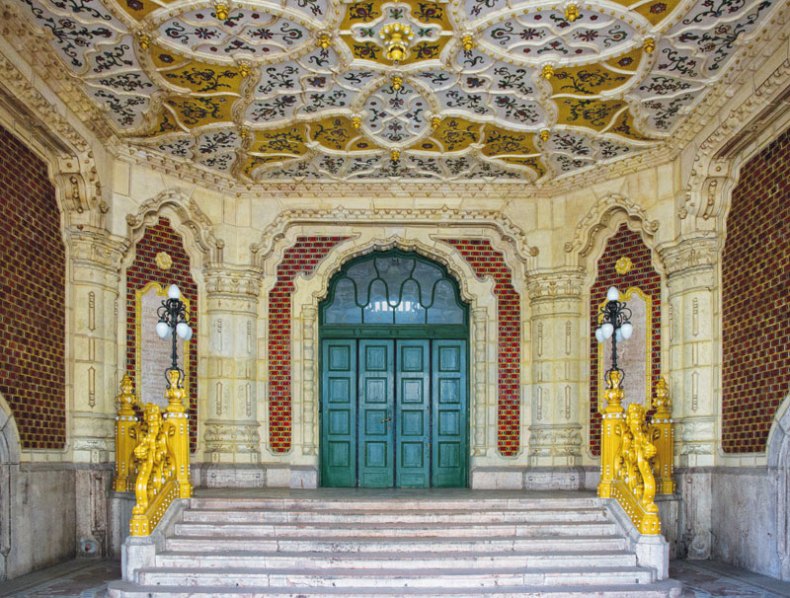
The porch at Lechner’s Museum of Applied Arts, its ceiling patterned with flower motifs. Photo: Péter Hámori/RCH HAS Institute for Art History
Such is the masterpiece of the Hungarian architect Ödön Lechner (1845–1914). We now tend to think of fin de siècle Europe in terms of unusual, often eccentric buildings in a manner loosely categorised as art nouveau or Jugendstil, designed by inventive architects trying to escape the constraints of history and create something new. Almost every great city seems to have produced one or perhaps two such architects: in Budapest it was Lechner.
A comprehensive exhibition about this remarkable architect – ‘Lechner: A Creative Genius’ – is currently on display at the museum (until 31 May). As the historian and adviser to the exhibition, József Sisa, writes in the catalogue, ‘He is regarded by many as the creator of the Hungarian national style, the master of the Secession, one of the fathers of modern architecture, and even the Hungarian Gaudí. There is truth in all these statements, but the reality is far more complex.’ Although it is now possible to see what was going on in, say, Glasgow or Helsinki in 1900 as part of a worldwide phenomenon, there were profound differences in the approaches of each city’s architects. Some, like Victor Horta in Brussels and Otto Wagner in Vienna, sought novelty by exploiting new building technologies. Others, like Eliel Saarinen in Finland and, arguably, C.R. Mackintosh in Scotland, were trying to develop national traditions of building. Lechner is peculiarly interesting in this context of ‘National Romanticism’ because, as far as many of his critics were concerned, there was no indigenous Hungarian architecture for him to develop. As he wrote in an essay, ‘So far there has not been a Hungarian language of form but there will be.’ Lechner had to look much further afield for inspiration.
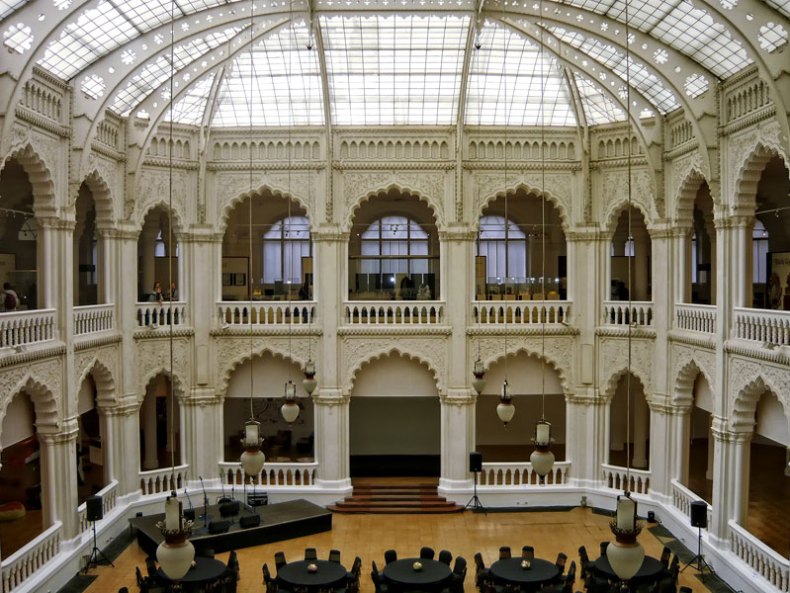
The museum’s atrium displays strong Indo-Saracenic influences. Photo: József Sisa/RCH HAS Institute for Art History
Much that is odd about Lechner is explained by his background and training. After the Hungarian revolution of 1848 had been crushed by the Austrians and Russians, his father confined his activities to running the family brickworks. This also produced ceramics, and this inspired Lechner’s love of coloured ceramic materials. His architectural training was in Berlin, at the Bauakademie. There he absorbed the theories of Karl Bötticher and of Gottfried Semper, above all the latter’s ‘cladding theory’, that architecture had evolved from structures hung with decorated fabrics. He also worked in France for three years and, like many of his contemporaries, became interested in England, in the Arts and Crafts movement and in modern domestic architecture. But more significant was what he looked at on his second trip to England in 1889, when he visited the South Kensington Museum (now the V&A) to study Indian and Persian art. For in that, he believed, lay the roots of Hungarian visual culture.
It is not pejorative to say that the Hungarians are peculiar. Their impenetrable language is related only – very distantly – to Finnish and Estonian. They may well be descended from the Huns, but the idea emerged in the later 19th century that their ethnic and cultural roots lay further east, in India. Lechner was not the only architect to subscribe to this engaging nationalist fantasy, but what is extraordinary is that he became interested in contemporary British colonial architecture designed in the so-called Indo-Saracenic style. As he later wrote, ‘The English, a highly cultured people, were not ashamed of researching into the relatively lower culture of a colony, adopting part of it and blending it with their own. Was it not at least as much the duty of us Hungarians to study the culture of our own people and weld it together with our general culture?’
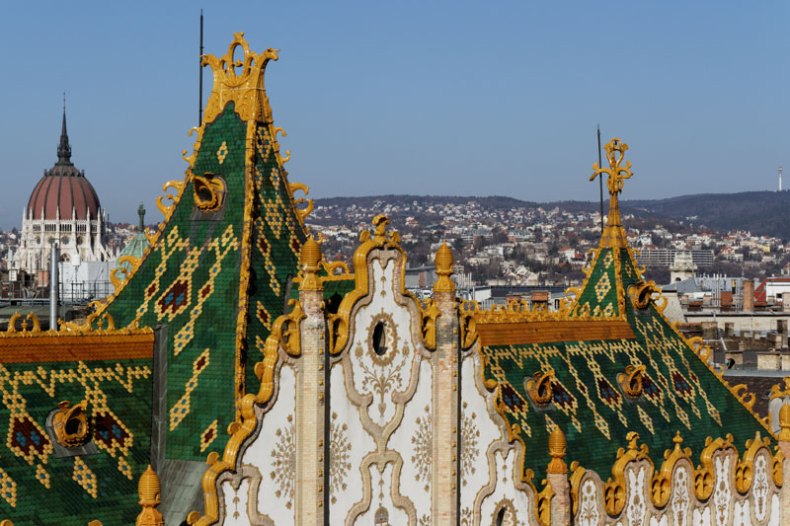
The roof of the Postal Savings Bank in Budapest, designed by Ödön Lechner with Sándor Baumgarten and constructed in 1900–01. Photo: Péter Hámori/RCH HAS Institute for Art History
Lechner’s knowledge of Indian and Persian art can be seen all over the Museum of Applied Arts, while the general massing of the building is conventionally European. A similar approach was adopted for the town hall he designed for Kecskemét (1893–95) and for two other public buildings in Budapest: the Geological Institute (1896–99) and the Postal Savings Bank (1900–01; with Sándor Baumgarten). Both are characterised by the use of weird exotic shapes, possibly deriving from carpet patterns. And both have fantastic coloured ceramic finials and chimneypots worthy of comparison with those of Antoni Gaudí. But a more telling comparison is that with another huge post office savings bank in the Austro-Hungarian Empire, the famous one in Vienna designed just a few years later by Otto Wagner. Both express an idea of modernity, but whereas Lechner’s is curvaceous and highly decorative, the Austrian’s was austere, rectilinear: grey granite and aluminium rather than bright majolica.
Because his work was similarly experimental and original, Lechner became associated with the Secession movement in Vienna and was therefore much criticised by the conservative Hungarian establishment, which tended to favour neo-baroque. In 1902, the minister of culture announced that ‘I do not like the secessionist style, and…it is not uncommon to meet the secessionist style under the name of the Hungarian style’ and made sure that Lechner received no more public commissions in the capital. His career rather tailed off. Younger architects, notably Károly Kós, now sought a basis for a modern Hungarian style in the old churches and wooden buildings of Transylvania and in native folk art. Lechner sympathised, later confessing that he now found the entrance to his own museum ‘a little too “Indian” for my taste’. He also wrote that ‘Perhaps I was too much caught up by [art nouveau] – I would make all my buildings differently now…’
Ödön Lechner’s major buildings are original but also eccentric, verging on the vulgar. But there is no doubt of their significance in the dynamic, modern Hungary that emerged after the 1867 ‘Compromise’ with the Habsburgs. The year his Museum of Applied Arts was completed saw the fulsome celebration of Hungary’s millennium, for which the first underground railway in continental Europe was constructed. He died less than two months before the outbreak of the catastrophic war which ended with the breakup of the Austro-Hungarian Empire and the loss of some two thirds of Hungary’s historic lands. Transylvania then became almost as remote as India.
Click here to buy this issue of Apollo magazine
Related Articles
Creativity and Constraints: Mackintosh’s architectural drawings at RIBA
Unlimited access from just $16 every 3 months
Subscribe to get unlimited and exclusive access to the top art stories, interviews and exhibition reviews.

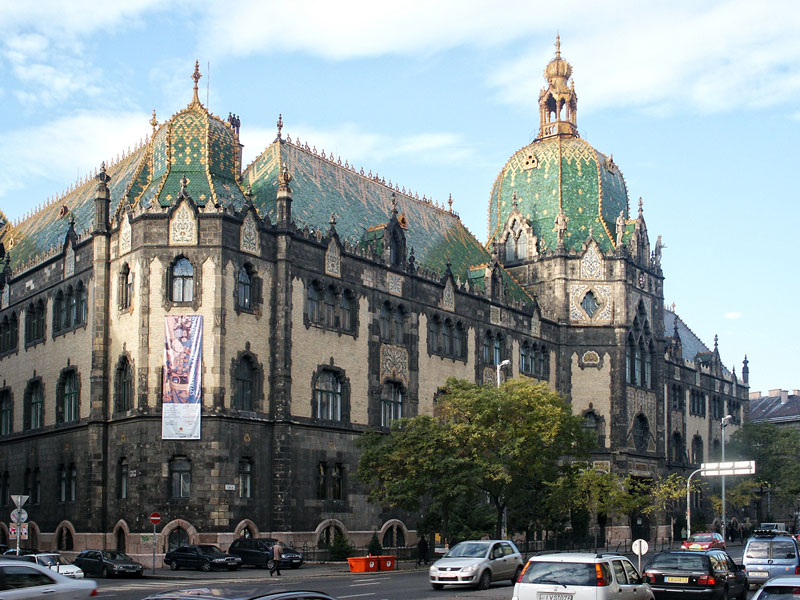

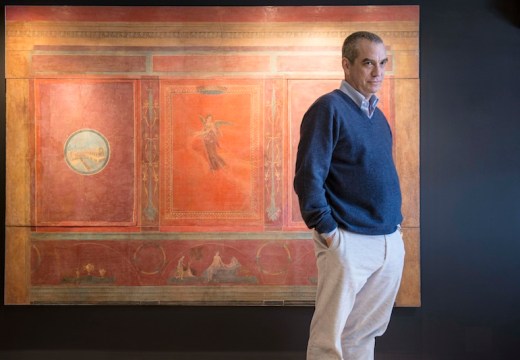
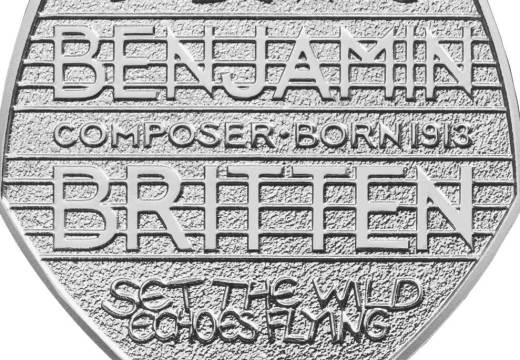









![Masterpiece [Re]discovery 2022. Photo: Ben Fisher Photography, courtesy of Masterpiece London](http://www.apollo-magazine.com/wp-content/uploads/2022/07/MPL2022_4263.jpg)
It’s time for the government of London to return to its rightful home